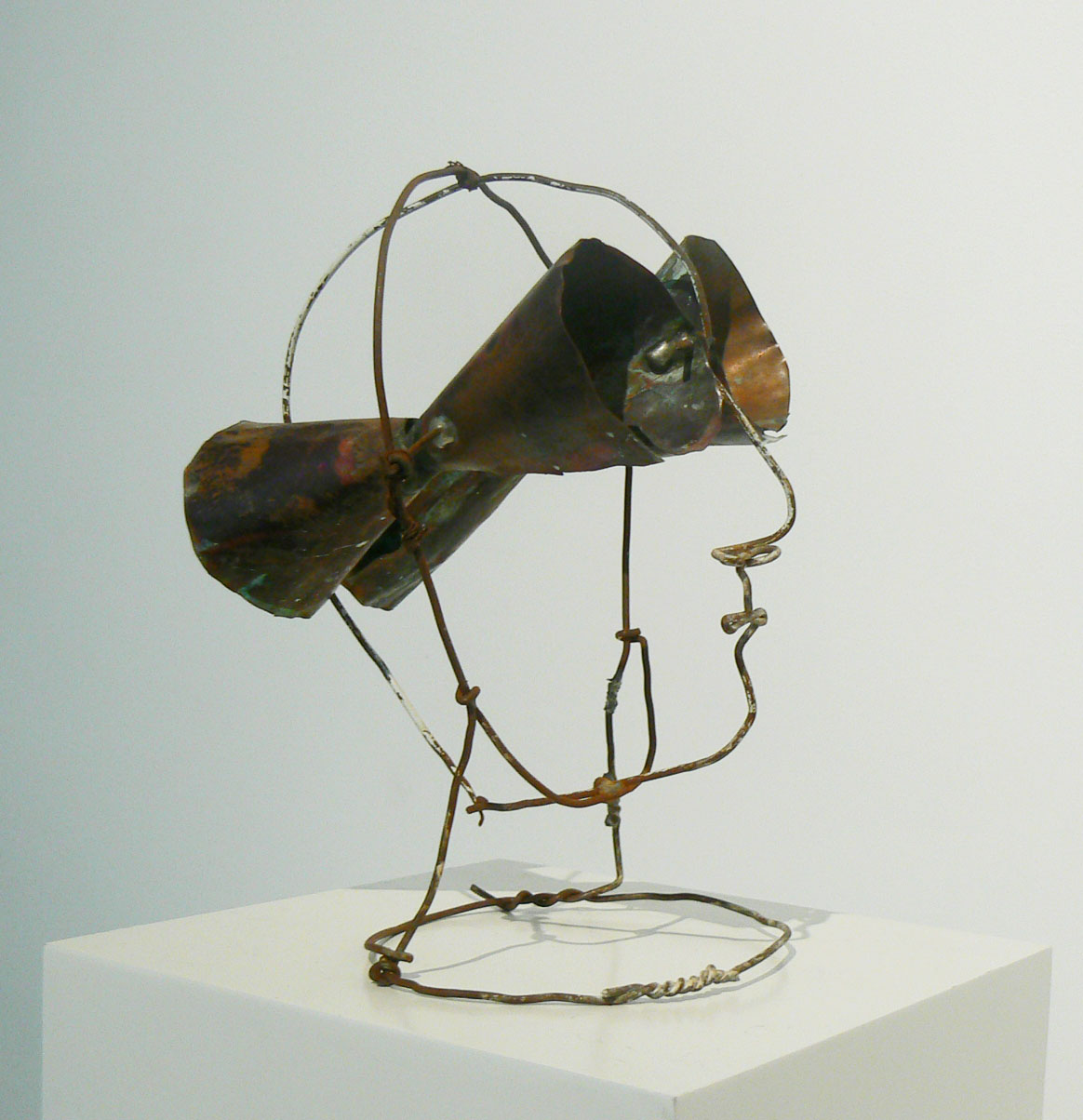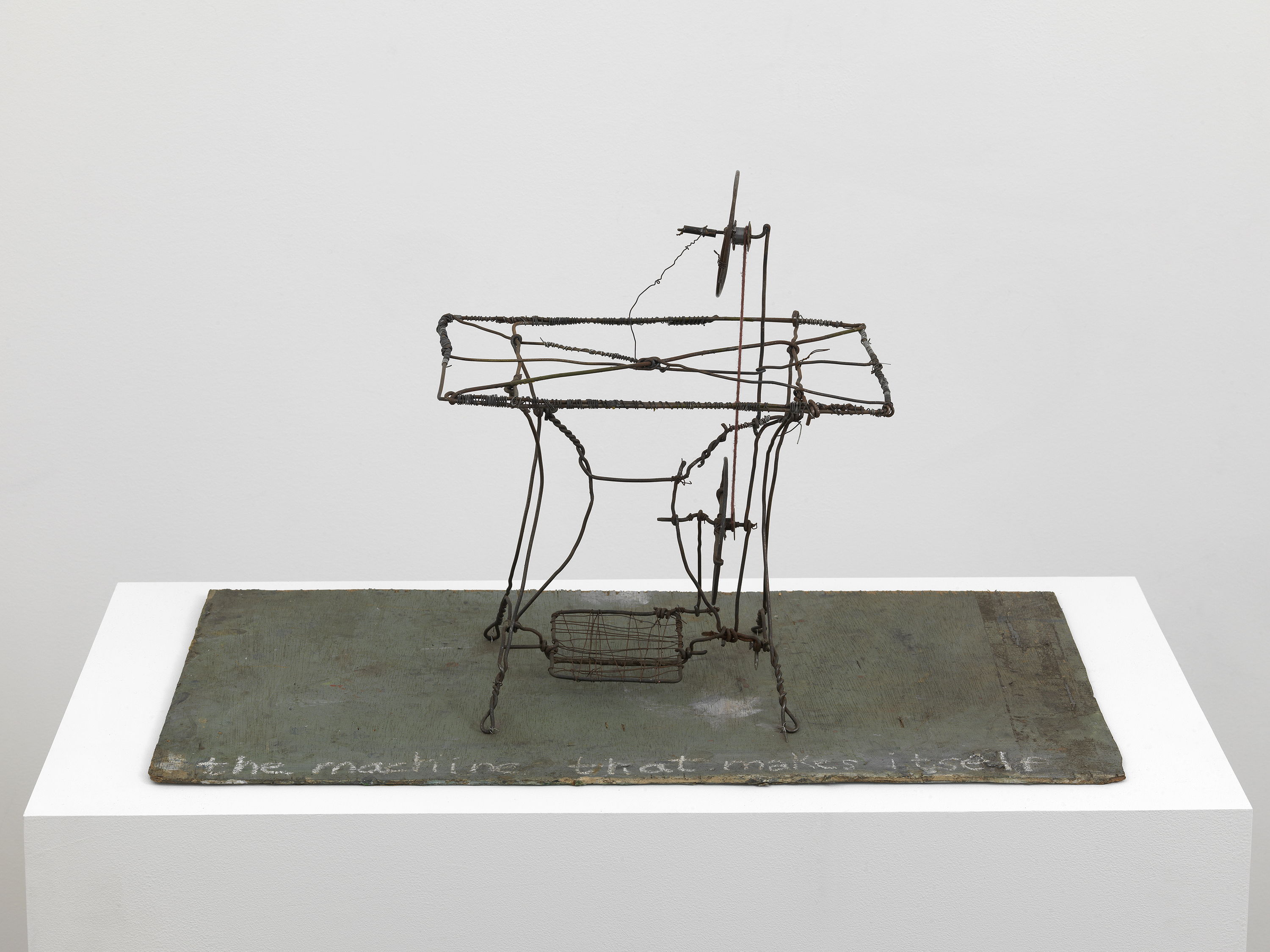Whitehot Magazine
October 2025
"The Best Art In The World"
"The Best Art In The World"
October 2025
June Leaf: Rage Against the Machine
 Robert Frank, June's Hand and Sculpture Mabou, c. 1980. Gelatin silver print 12 1/2 x 8 5/8 inches. Addison Gallery of American Art, Phillips Academy, Andover, Massachusetts, Gift of the artist, 1995.50. Image: © The June Leaf and Robert Frank Foundation
Robert Frank, June's Hand and Sculpture Mabou, c. 1980. Gelatin silver print 12 1/2 x 8 5/8 inches. Addison Gallery of American Art, Phillips Academy, Andover, Massachusetts, Gift of the artist, 1995.50. Image: © The June Leaf and Robert Frank Foundation
By JOSH NILAND September 11, 2025
This summer in Andover, Massachusetts, I had the chance to take in the enthralling June Leaf retrospective June Leaf: Shooting from the Heart at the Addison Gallery of American Art on the campus of Phillips Academy (about one hour north of Boston).
The premier iteration of the show, which will next travel to NYU’s Grey Art Museum and later the Allen Memorial Art Museum at Oberlin College after it closed July 31st, moves between a range of media—staging freewheeling paintings, fervid kinetic sculptures, letters, collage, and frenzied works on paper against the jaded backdrop of our current to gracefully inform academic audiences while incorporating more than 150 works documenting her restless seven-decade peregrination in art history.
Beginning with her dynamism, and unpacking the bleary tumult of the artist’s development following her breakthrough presentation Street Dreams at the Allan Frumkin Gallery, the five-part exhibition captures Leaf’s complex feelings about a mechanistic universe and its processes upon dreamed of flying, and of figuring “a way out" of her parents’ cynical experiences.
 June Leaf, Woman Theater, 1968. Oil on canvas with wood, nylon rope, tin, and chain, 86 x 57 1/2 x 6 3/4 inches. Smithsonian American Art Museum, Gift of the S.W. and B.M. Koffler Foundation, 1979.53.21. Image: © The June Leaf and Robert Frank Foundation, Photo: Courtesy Smithsonian American Art Museum
June Leaf, Woman Theater, 1968. Oil on canvas with wood, nylon rope, tin, and chain, 86 x 57 1/2 x 6 3/4 inches. Smithsonian American Art Museum, Gift of the S.W. and B.M. Koffler Foundation, 1979.53.21. Image: © The June Leaf and Robert Frank Foundation, Photo: Courtesy Smithsonian American Art Museum
A few of the more salient themes here are motion, nature, and her disposition against the Cold War urban anthropocene—namely its effects on the disturbed underbelly of industrial Americana. Two pieces worth noting are the hand-sewn semiautobiographical sculpture Ascension of Pig Lady (1968) and a breathing kinetic mobile titled The Head (1981). Nearly a dozen others of differing scales and varieties follow; linking states of being to their eventual realization, pointing out some of our own vagaries, and capturing the insurgent desire that she so relished: “to create life out of life.”
Leaf, who married Robert Frank in 1975 and worked daily until her death in 2024, emerged from the shadow of Chicago’s so-called ‘Monster Roster’ painters and has since proven difficult to pin down by even the best curatorial accounts. She died an intrepid and “idiosyncratic” figure, in ARTFORUM’s estimation. Her heart, when it first captured critical attention, was that of a “poet with a taste and a talent for complex images.”
 June Leaf, Looking, 2003 Tin and wire 8 x 5 1/2 x 6 1/4 inches. Private collection © The June Leaf and Robert Frank Foundation, Photographer not known, Courtesy Hyphen, New York
June Leaf, Looking, 2003 Tin and wire 8 x 5 1/2 x 6 1/4 inches. Private collection © The June Leaf and Robert Frank Foundation, Photographer not known, Courtesy Hyphen, New York
Paradigmatically, what stands out besides her sheer inventiveness and ability to eschew rigid categorizations is the treatment of Leaf’s obsession with everyday things as the vehicles through which we can experience the divine or interpret human nature. Its components elicit a new sense of appreciation for those objects as they exist in a world too accustomed to treating people as either puppets or detritus. Shoes, glasses, fabric, and clothing contain a reified effect, along with the freedom implied by ladders. Dancers and their tango movements offer a similar motif. The sewing machine and its opposite enforcement of gender roles occupy another. A larger theme I ascertained from this is that she had endeavored to live to mount a quiet challenge against those expectations—in spite of her vicissitudes, and in the shadow of her husband’s wider acclaim and art world celebrity.
From there, the essence of observation—skipping from youthful pilgrimages on the Chicago ‘L’ train network, to jaunty early-60s encounters with New York City sidewalks, and a slow embrace of the refuge offered by a move with Frank to Nova Scotia after 1970—envelopes the carefully selected work in the show, indicating tensions between the picture’s two-dimensional surface and the lurking ontological reality beneath them. Things, as they are, remain in symbiosis with tenets of the artist’s imagination. She claimed she never would have been liberated from the pretensions of naturalistic painting and realism had she not taught herself how to properly represent objects in three-dimensions.
 June Leaf On the Pain of Growing a Wing, 2016. Charcoal and acrylic on paper 30 x 43 3/4 inches. Tia Collection, Santa Fe, NM © The June Leaf and Robert Frank Foundation, Photo: Alan Wiener, Courtesy Hyphen, New York
June Leaf On the Pain of Growing a Wing, 2016. Charcoal and acrylic on paper 30 x 43 3/4 inches. Tia Collection, Santa Fe, NM © The June Leaf and Robert Frank Foundation, Photo: Alan Wiener, Courtesy Hyphen, New York
In tune with this, women and their lifegiving prowess often serve as antidotes that expose a society whose constraints are the products of limited imaginations, and the sometimes dangerous wheels and levers put in place otherwise ‘smart’ men. She proposed a monument to their resiliency at the pinnacle of feminism’s second wave, and followed the implications first made in Arcade Women (1956) with her continuous pursuit of the trope of mythologized figures. The most poignant example of all of these is an endearing wood and watercolor collage Woman Machine (1951), the protagonist of which Leaf says:
“[Is] a robot being made by a man through a process of nature, their connection, attraction. She is being formed in the fire, combustion, the energy of their communion. She has a vision and her vision is generated now on this treadmill walk with the robot maker so he is engaged in the machine with her.”
 June Leaf, The Machine That Makes Itself, 2021. Wire, chalk, wood, and string 14 x 24 x 13 1/4 inches. Collection Estate of June Leaf. Courtesy Hyphen, New York © The June Leaf and Robert Frank Foundation, Photo: Courtesy of the artist and Ortuzar, New York. Photo: Dario Lasagni
June Leaf, The Machine That Makes Itself, 2021. Wire, chalk, wood, and string 14 x 24 x 13 1/4 inches. Collection Estate of June Leaf. Courtesy Hyphen, New York © The June Leaf and Robert Frank Foundation, Photo: Courtesy of the artist and Ortuzar, New York. Photo: Dario Lasagni
It took the Addison’s curators a total of four years to assemble this feature using archival material and a trove of works from its own collection. During those years, Leaf was present throughout to oversee the production. Everything, including its wall labels, has her mark on it—especially (for me) the very poignant valediction found underneath Woman Theater (1968). “I wanted to show that there was a woman who was like a ‘guru’—or toy maker [...] like a spider with many arms always trying to control ‘life’—but around her was nature—free, everflowing, eternal,” it reads. “I am happy to be part of this evolution, the primitive and grasping part of my mind submitting to the greater and more powerful and eternal forces around me. I am just learning. I am a crazy plant.”
The dates for June Leaf: Shooting from the Heart are September 9–December 13 at NYU and January 26–May 24, 2026, at Oberlin College.

Josh Niland
is currently the featured staff writer at Archinect in Los Angeles and has contributed to Hyperallergic, Artnet, Architectural Digest, the Boston Phoenix, and other outlets with a focus on artists’ narratives and the psychological underpinnings of the art-making process. He holds a BA in Philosophy from Boston University and is presently looking for publishers for his new book proposal, a work of metafiction depicting post-Covid life in New York City through the lens of thirteen new architectural projects.
view all articles from this author








